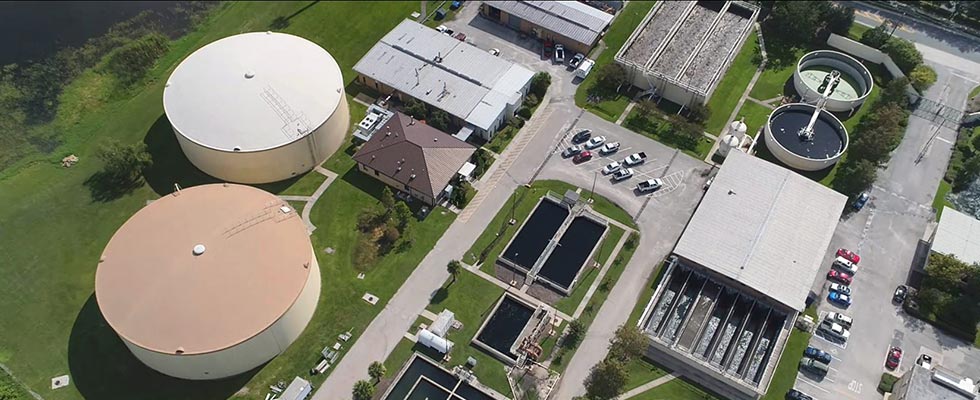
Due to population growth and dwindling Floridan aquifer levels, experts have long predicted that groundwater sources alone will not meet future freshwater demands for central Florida residents. To address this looming issue, central Florida water utilities have begun exploring viable alternatives to diversify their water supplies. There are several options water utilities can consider when expanding their drinking water sources, including surface water, groundwater and desalination. One opportunity gaining popularity nationwide is potable water reuse.
The city of Altamonte Springs, located in Seminole County, Florida, was one of the first in the area to address its water challenges by investigating drinking water reuse. In 2017, the municipality implemented a pilot program called pureALTA. The pilot was designed with two primary goals—to serve as a platform for Altamonte Springs’ future potable water reuse efforts and to educate the city’s 45,000 residents about the benefits of potable water reuse.
St. Johns River Water Management District (SJRWMD) shared the city’s vision of creating a sustainable water supply and provided grant funding to jumpstart the pilot. The project, which utilizes technology to purify reclaimed water to drinking water standards, also helps the city diversify its water source options.
The pureALTA Project
The pureALTA project is a treatment facility that treats reclaimed water by employing an advanced treatment train, which includes a paired ozone and biological active filtration process. The city worked with an engineering firm and a water solutions and technology company to develop an ozone-biologically active filtration-based (O3/BAF) advanced water treatment train that also included ultrafiltration (UF) membranes, granular activated carbon (GAC) filtration and ultraviolet advanced oxidation (UV AOP).

This solution was chosen over reverse osmosis (RO)-based systems. The pureALTA treatment process begins with reclaimed water that is then treated to meet or exceed drinking water quality standards.
A handful of other cities in the United States have potable water reuse projects, but most rely on high-pressure filtration as the core treatment process of purification, rather than pureALTA’s combination of systems that includes biological treatment processes. Proving to be less expensive and more energy efficient, pureALTA does not generate the toxic sidestreams that some other systems produce.
The network of two advanced water treatment processes—ozone and biologically active filtration—is handled by the integrated O3/BAF system, featuring an ozone generator, filter underdrain and media retainer technologies. The system treats approximately 28,000 gallons per day (gpd) and uses an O3 (total organic carbon [TOC] + nitrite) ratio to set the ozone dose. The city monitors system performance with analytics equipment, including TOC and nitrite measurements upstream of the process and TOC downstream of the process to provide automated, real-time control.
The integrated and automated process sets the tone for the entire treatment train performance. The TOC-reduction across the system ranges from 25% to 37% and operates as a barrier for the UF membranes.
Pilot Results
During its first year of operation, the UF did not require any maintenance cleans and performed one clean-in-place. Most membrane operations require cleanings every six months.
Also, the UV-transmission average across the O3-BAF process improved from 71% to 86%, which enhanced the performance of the UV advanced oxidation process and reduced the overall operating costs of the UV reactor. Based on the results of the pilot project, the city could develop a full-scale system with the potential to create about 5% of Altamonte Springs’ daily water demands, reducing stress on the aquifer.
Altamonte Springs frequently conducts educational tours at the pureALTA facility, providing students and utilities a first-hand view of how the potable reuse project works and how it can be a component of Florida’s future water supply.
The city also developed the Altamonte Springs Science Incubator (AS2 I) program, which offers hands-on science, technology, engineering and math (STEM) learning for Seminole County students. The program includes field trips to various sites, including the pureALTA project site, with discussions of treatment processes, safety, drought and the importance of diverse water supplies.

Altamonte Springs and the pureALTA project has won two awards. The 2018 International Water Association Project Innovation Awards recognized the city as the only U.S. project with a top award in the Market-Changing Water Technology and Infrastructure category. The pureALTA project also received the 2017 Water Reuse Innovative Project of the Year award. The award recognizes solutions for expanding the use of recycled water and the creation of future models that advocate the implementation of water reclamation nationwide. Since its implementation, water treatment experts, city engineers and water agencies around the country have come to observe pureALTA.
“They’re interested in how they could adapt this technology to augment their own water supplies,” Altamonte Springs City Manager Frank Martz said. “We see the project as not only something that can benefit our residents but as a model that can be adapted by other utilities throughout Florida as well as the rest of the country.”

